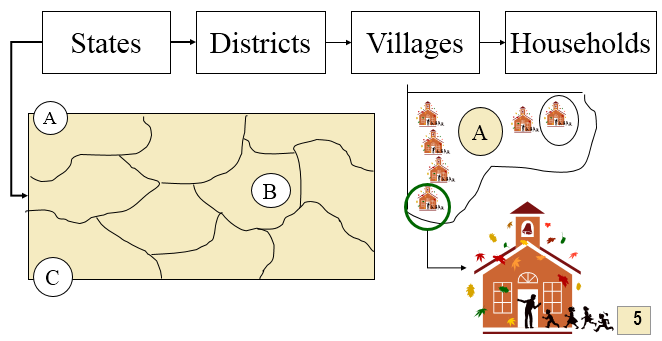
Multi-stage sampling (also known as multi-stage cluster sampling) is a more complex form of cluster sampling which contains two or more stages in sample selection. In simple terms, in multi-stage sampling large clusters of population are divided into smaller clusters in several stages in order to make primary data collection more manageable. It has to be acknowledged that multi-stage sampling is not as effective as true random sampling; however, it addresses certain disadvantages associated with true random sampling such as being overly expensive and time-consuming.
Contrary to its name, multi-stage sampling can be easy to apply in business studies. Application of this sampling method can be divided into four stages:
Let’s illustrate the application of the stages above using a specific example.
Your research objective is to evaluate online spending patterns of households in the US through online questionnaires. You can form your sample group comprising 120 households in the following manner:

My e-book, The Ultimate Guide to Writing a Dissertation in Business Studies: a step by step approach contains a detailed, yet simple explanation of sampling methods. The e-book explains all stages of the research process starting from the selection of the research area to writing personal reflection. Important elements of dissertations such as research philosophy, research approach, research design, methods of data collection and data analysis are explained in this e-book in simple words. John Dudovskiy